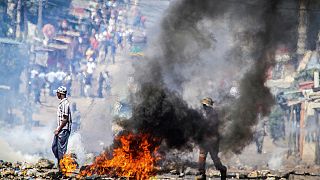Mozambique
While Mozambique was forecast at a sustained growth in 2014 at 7.5 and 8.1 percent for 2015 and 2016 respectively by the IMF, it now has one of the fastest growth in Africa.
According to data by the National Statistics Institute, it recorded a 5.9 percent in the Q3 of 2015, against 5.7 percent over the same period last year.
As in the previous years, the main drivers of economic growth have been public expenditure and Foreign Direct Investment (FDI).
“The economic situation is favorable with a growth rate of 7%. The impact of floods this year is moderate and Mozambique should remain one of the most dynamic economies in the continent,” said Alex Segura-Ubiergo, an IMF representative.
According to experts, this performance is the result of a good lifeline for the gas, electricity sectors and an upward trend in mining activities.
In Tete province, between 25 and 30 billion tons of coal, 10% of the worlds reserves, were discovered by the Brazilian group Vale in 2013.
Anadarko Petroleum of the US and Italy’s Eni also identified a potential 3,700 billion m³ of offshore gas in the Rovuma River basin to the north east of the country.
Exporting the liquefied gas will make it the third largest producer in the world after, the US and Russia respectively.
The exploitation of these resources might allow the country to take the spot of the first African producers of energy by 2020.
Between 2010 and 2014, Mozambique attracted more than $16 billion of foreign direct investments.














Go to video
SADC extends mandate of its troops in DRC and Mozambique
01:13
EU agrees to give another €20 million to Rwanda Defence Force in Mozambique
01:16
Mozambique's government imposes ban on demonstrations, after weeks of deadly post-election protests
01:04
Post-election violence intensifies in Mozambique ahead of SADC meeting
01:09
South Africa closes main border with Mozambique, citing safety concerns amid post-election protests
01:14
Post-election protests in Mozambique leave 10 dead, dozens injured